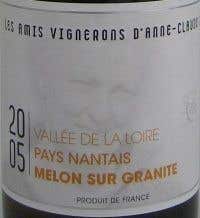This is a longer version of an article also published in the Financial Times.
Those of us at the outer spokes rather than at the world’s financial hubs are understandably keen to know how the current economic turmoil will affect our particular sphere. Early reports suggest that in most commercial sectors it is the middle ground that will suffer most.
Certainly in wine, there seems little slackening of demand for the most expensive trophy wines made, in strictly limited quantities, by the top producers of France. And at the bottom end, just as UK mass market retailers were starting to ask more realistic prices for their cheaper wines, they are now desperately trying to source wines at 1990s or even 1980s prices to sell as ‘value wines’. It seems as though it will be mid-priced wines that will suffer in our newly straitened circumstances.
This is a great shame as by far the best value in wine today is in the middle ground, wines that retail at between about £8 and £15, or $15 to $30. It is my firm belief that with wine, just as with eating out in Britain, there is no direct correlation between price and quality. In many cases you do not get what you pay for. Instead you get the ‘positioning’ of that wine if it is made by an outfit large enough to have a marketing strategy. (One of the most absurd strategies is surely to launch a wine brand as an ‘icon’. Icons have to earn their status rather than have it thrust upon them on the drawing board.) And from smaller producers, there is no shortage of wine that is overpriced simply because the producer is hoping that the small quantity available will be sufficient to stoke up demand – or because the producer has seen a neighbour asking for a similar price and is determined not to be outdone.
At the bottom end, so much of the retail price is accounted for by fixed costs and, in the case of countries such as the UK, by duties and taxes, that there is dangerously little left to pay for the wine itself. But in my suggested middle range, I find you do pretty much get what you pay for. The price much more accurately reflects the effort and quality of grapes that went into the bottle.
This middle ground is the playground of a host of dedicated, individual, artisan wine producers, but let me start my specific recommendations with a most unexpected exception to this. Woodbridge is the diffusion label started up by the charismatic late Robert Mondavi, made at and named after the bulk winery near Lodi that he took over as part of the settlement of his dispute with his brother Peter.
Since 2004 Mondavi, including their really rather ordinary Woodbridge line, has belonged to the world’s biggest wine company Constellation, and I have to take my hat off to them in the light of the current bottling of Robert Mondavi, Woodbridge Chardonnay 2006 California which is selling for around £7 a bottle chez most major UK retailers. (I am assured that the wine with the same name selling from as little as $4.99 in the US is, in 2006 unlike 2005, exactly the same blend.) This is a wine from the prolonged 2006 growing season that is simply bursting with fruit, most of it ripened under the relatively warm skies of the Lodi appellation, well inland of Napa Valley, but enlivened with a sizeable proportion of racier Chardonnay grown in the fog-cooled Central Coast. For current drinking it is hugely enjoyable with none of the excess of sweetness that can mar many California Chardonnays.
Much more in line with the dedicated noble paysan more often associated with great mid-priced wine is Jean-Paul Brun’s Domaine des Terres Dorées, Cuvée Première 2007 Beaujolais. It can be found for around £9 a bottle from several UK retailers who buy it from importers OW Loeb, at whose recent tasting I renewed my acquaintance with the superlatively healthy, expressive wine that Monsieur Brun manages to coax from his clay limestone soils in a decidedly unfashionable corner of the Beaujolais region. This is the sort of wine that can easily be overlooked when the likes of Asda are offering their own Extra Special (sic) 2006 Beaujolais Villages for less than a fiver a bottle, but I would rather have one bottle of Terres Dorées than three or four of the rather meagre Asda bottling. And it is worth noting that Brun’s original UK importer, Savage Selection of Northleach, is offering the hand crafted Cuvée Première 2007 for just £6.95 on www.savageselection.co.uk, and the more serious Cuvée l’Ancien 2007 for future drinking at £8.80.
Another possibly even more obvious example of a hand-crafted French wine that offers truly remarkable value is the organic pioneer Guy Bossard’s Muscadets from Domaine de l’Ecu. Again, it takes confidence or inside information to realise that even though Tesco may currently be offering six bottles of an own-label Muscadet for as little £16.99 at www.tesco.com/winestore as part of its attempt to retain its share of the bottom end of the market, the six bottles of Sélections Anne-Claude Leflaive, Melon sur Granit Pays Nantais 2005 Muscadet de Sèvre-et-Maine currently offered by Armit at www.armit.co.uk at £62 is likely to provide a wine lover with a much better deal. Bossard is a genius and this wine, grown on granite soils, is not yet at its peak and would knock spots off many a white burgundy at three times the price. Poor Monsieur Bossard has no stocks of it himself but lucky Americans can still find it, under its original name Domaine de l’Ecu, Granite 2005 Muscadet, from $16.99.The 2005 is available in Britain only as part of a special range selected by the directrice of Domaine Leflaive of Puligny-Montrachet but both Artisan Wines and Genesis Wines are currently selling Bossard’s 2006s.
Yes, it is complicated. But well worth it.

